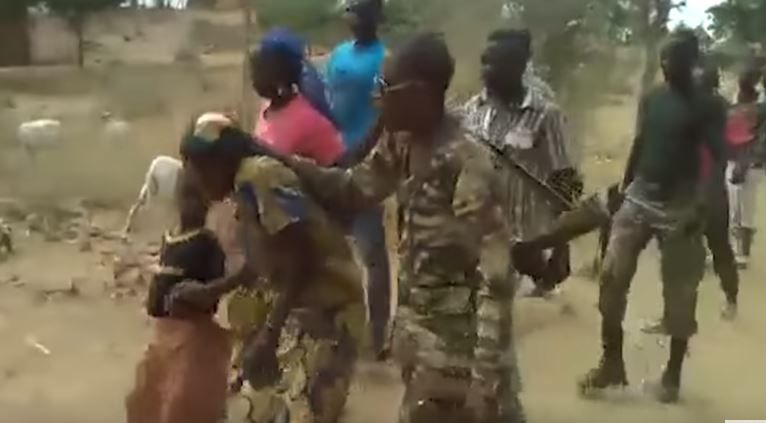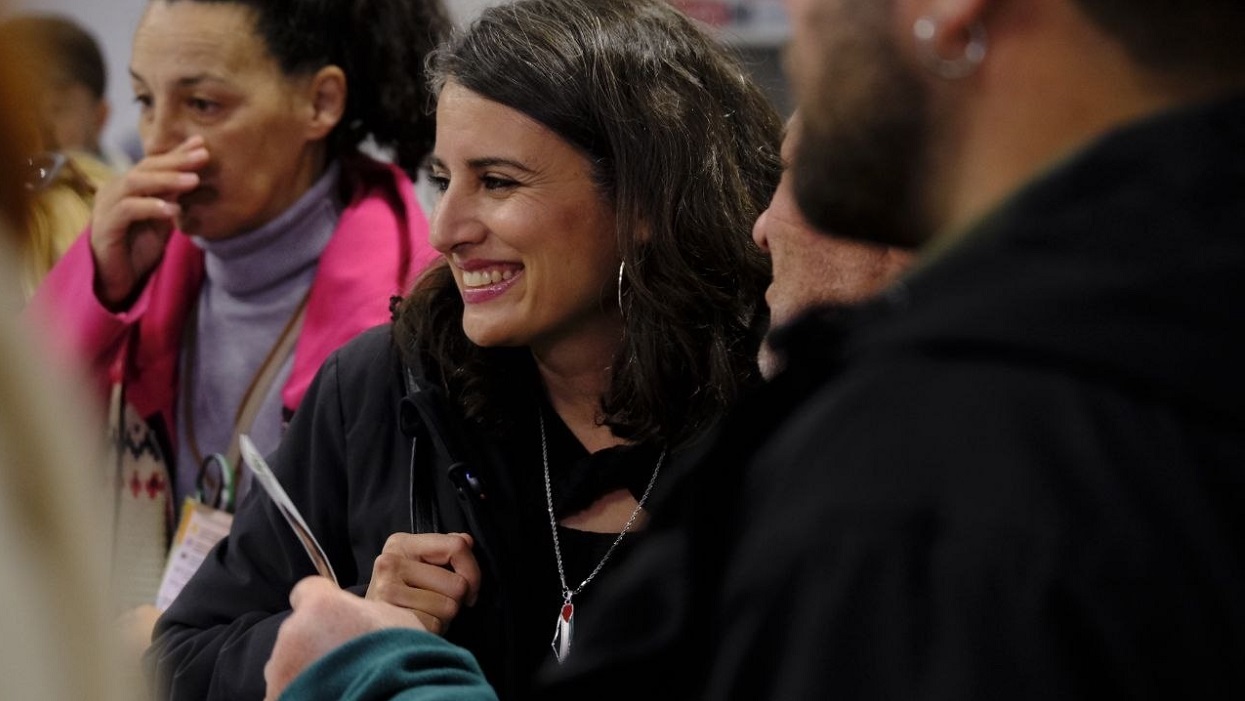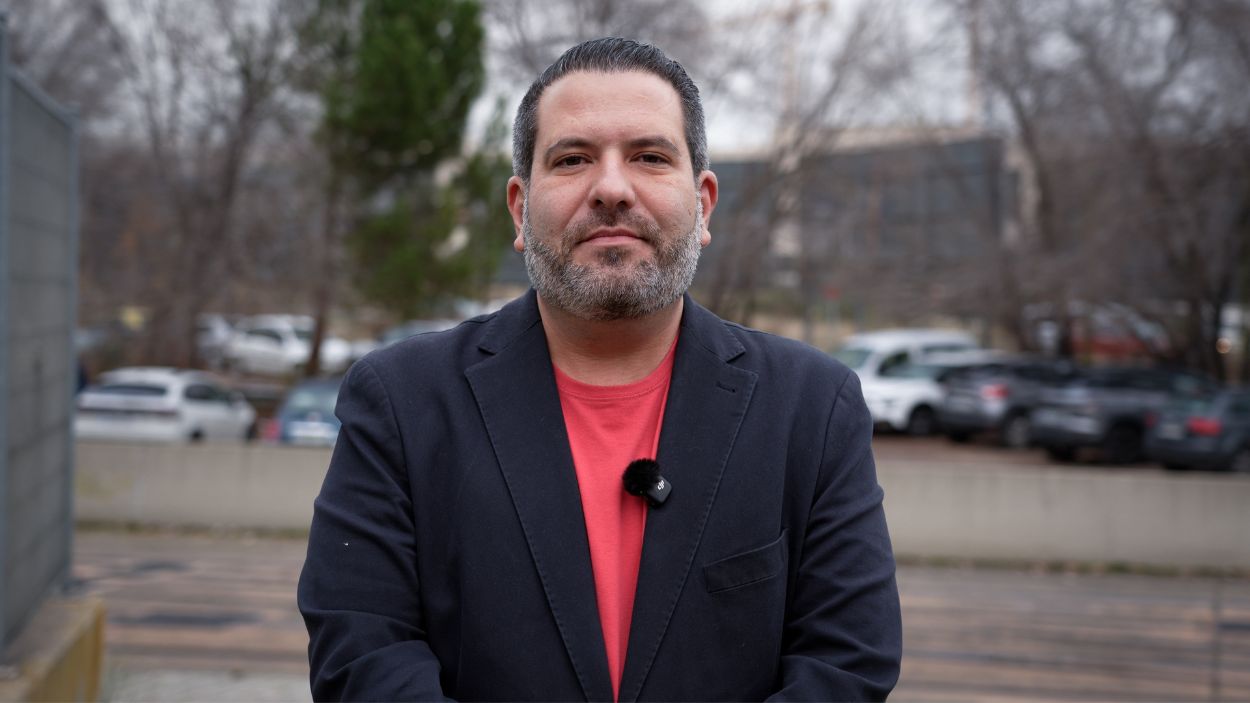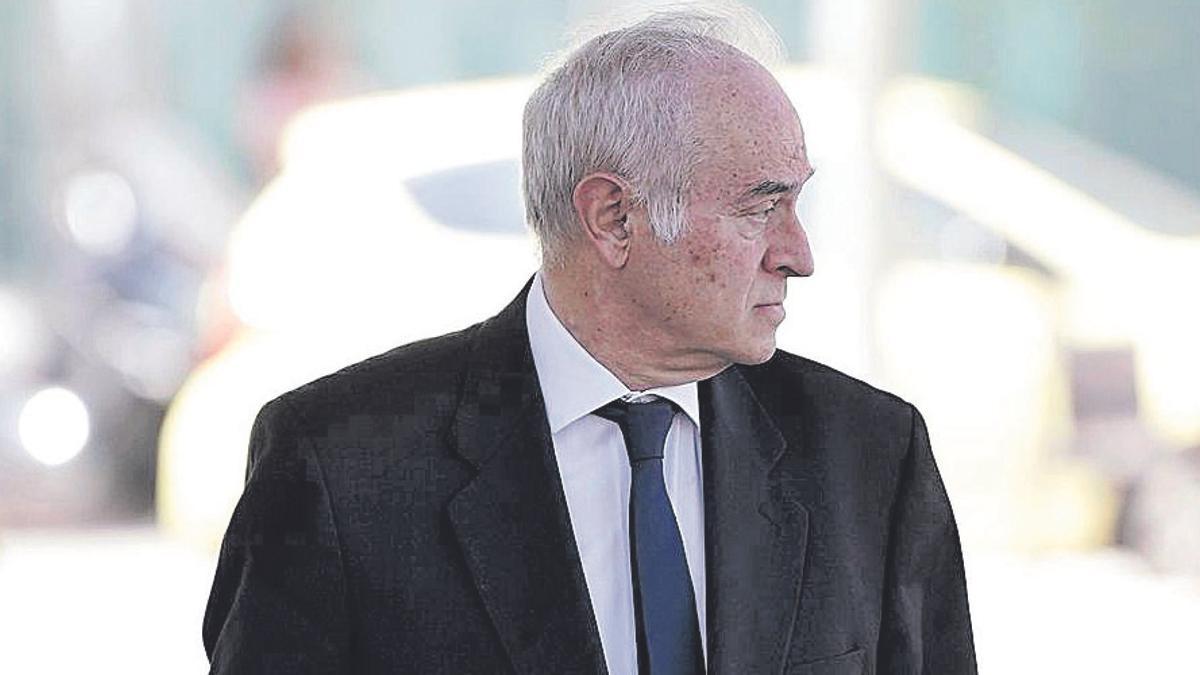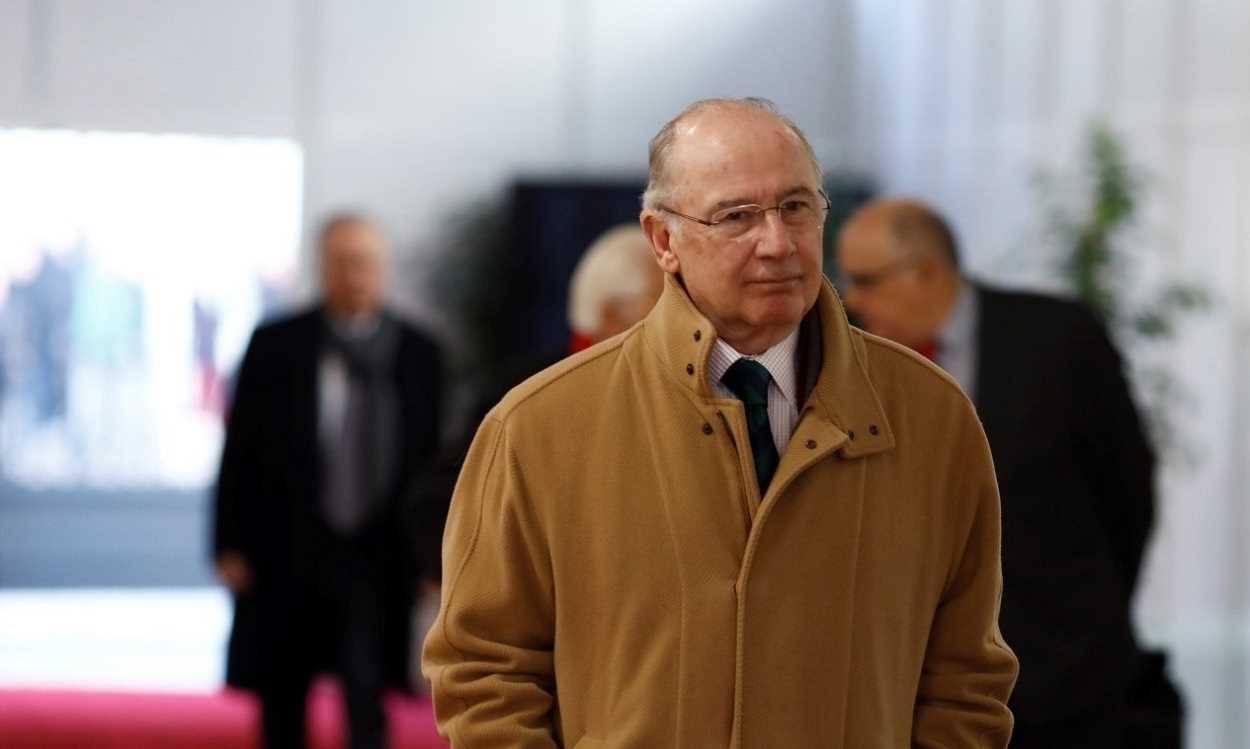El pasado mes de julio, comenzó a circular por las redes un vídeo atroz en el que dos mujeres y dos niños eran guiados a punta de pistola por un grupo de soldados camerunenses. En el documento podemos atisbar cómo los niños, de la mano de sus madres mientras son agredidas, son conducidos a su fatal destino. Finalmente, son arrodillados y brutalmente asesinados tras la ráfaga de más de 22 disparos.
Al principio del vídeo se puede escuchar que las mujeres son acusadas de pertenecer al grupo yihadista de Boko Haram, algo que consigue aportar luz a qué ha llevado a los soldados a cometer tan vil crimen. Ante estos hechos y guiados por los escasos minutos del vídeo, la BBC ha conseguido resolver el caso y dilucidar quiénes son los responsables del asesinato de dos mujeres y dos niños en un paradigmático ejercicio de periodismo. Así es Anatomía de un asesinato.
This is the video that went viral. We’ve cut out the ending, but - WARNING – it’s distressing. pic.twitter.com/6JJrdJqurW
— BBC News Africa (@BBCAfrica) 24 de septiembre de 2018
¿Dónde ocurrió?
La primera duda nació a la hora de localizar el lugar del crimen. En un principio se creía en dos emplazamientos: Camerún o Mali. El gobierno camerunés se desentendió del tema alegando que el vídeo eran Fake News. El ministro de Información de Camerún, Issa Tchiroma Bakary, afirmó que “el vídeo que esta circulando no es otra cosa que un desafortunado intento de distorsionar los hechos reales e intoxicar al publico. Puede ser fácilmente cuestionado”.
Un mes después, se anunció que siete miembros del ejército estaban siendo investigados aunque no se admitió oficialmente que estos asesinatos fueran cometidos en suelo camerunés y perpetrados por soldados cameruneses.
En primer lugar, se trata de conseguir buscar el lugar exacto en el mapa. Para ello, se toma como referencia una montaña que consigue entreverse en el horizonte. A través de Google Earth, la BBC consigue demostrar que el vídeo es grabado en una carretera en la ciudad de Zelevet, al norte de Camerún y frontera con Nigeria dónde se lucha contra Boko Haram.
So we took a closer look at the video…and found clues that prove the government was wrong.
— BBC News Africa (@BBCAfrica) 24 de septiembre de 2018
We’ll start with the location. Where did this happen?
The first 40 seconds of the video capture a mountain range with a distinctive profile pic.twitter.com/Eb70XuGL8I
After a tip off from a Cameroonian source, we found an exact match for that ridge line on Google Earth pic.twitter.com/niJoH9w3nX
— BBC News Africa (@BBCAfrica) 24 de septiembre de 2018
It places the scene on a dirt road outside a town called Zelevet, in the Far North of Cameroon, close to the border with Nigeria.
— BBC News Africa (@BBCAfrica) 24 de septiembre de 2018
This is the region where Cameroonian soldiers are fighting the jihadist group Boko Haram. pic.twitter.com/9tmS8hPie3
Además de la montaña, el medio se sirvió de elementos como caminos, edificios o árboles para encontrar el lugar exacto de forma precisa a través de imagen del satélite.
Once we had the general location, we looked at other details in the film – tracks, buildings, trees – and matched them precisely to features visible on satellite imagery. pic.twitter.com/IzKuyKzao8
— BBC News Africa (@BBCAfrica) 24 de septiembre de 2018
Putting all this evidence together, we can say with certainty that the killings happened herehttps://t.co/ION682W82n pic.twitter.com/kF0CM0KHbr
— BBC News Africa (@BBCAfrica) 24 de septiembre de 2018
¿Cuándo ocurrió?
Del dónde pasamos al cuándo. Tras conocer que hay un edificio que antes de noviembre de 2014 todavía no había sido construido, se sabe que el acto se hizo después de dicha fecha. También sabemos que en febrero de 2016 el edificio había sido derruido, consiguiendo ajustar todavía más la fecha. Y si a estos datos le sumamos las condiciones atmosféricas, la BBC consigue situar la acción entre enero y abril de 2015.
When did this happen?
— BBC News Africa (@BBCAfrica) 24 de septiembre de 2018
Again, the video contains clues.
This building is visible in the video. But satellite imagery reveals that, back in November 2014, the walls around it had not yet been built.
The killing happened after November 2014. pic.twitter.com/XODYqL5LRY
When did this happen?
— BBC News Africa (@BBCAfrica) 24 de septiembre de 2018
Again, the video contains clues.
This building is visible in the video. But satellite imagery reveals that, back in November 2014, the walls around it had not yet been built.
The killing happened after November 2014. pic.twitter.com/XODYqL5LRY
We know that the murders took place in the hot, dry season, because this footpath – just visible in the video – only appears on the satellite imagery between January and April.
— BBC News Africa (@BBCAfrica) 24 de septiembre de 2018
That makes it probable that we’re looking at early 2015 pic.twitter.com/Uotw9w25mY
Notice that the soldiers, like moving sundials, cast shadows on the track.
— BBC News Africa (@BBCAfrica) 24 de septiembre de 2018
A simple formula tells us the angle and direction of the sun.
This corroborates our conclusion on the date, and narrows the timeframe further: the killings happened between March 20 and April 5th 2015 pic.twitter.com/KC8HEvKFuS
¿Quiénes son los autores?
Sabido el momento y el lugar, el medio consigue resolver quiénes son los protagonistas del asesinato. El tipo de arma es un rifle serbio comúnmente usado por el ejército camerunés. Al igual que el tipo de vestimenta, con un estilo de camuflaje típico entre las filas del país africano.
The government’s July statement claimed that the guns seen in the video are not those used by Cameroonian troops.
— BBC News Africa (@BBCAfrica) 24 de septiembre de 2018
But this is a Serbian-made Zastava M21. It’s rare in sub-Saharan Africa, but it *is* used by some divisions of the Cameroonian army. pic.twitter.com/vZ6xdwpC5O
The govt also claimed that Cameroonian soldiers in the Far North wear pale, desert-style fatigues, not the darker, forest-style camouflage seen in the video.
— BBC News Africa (@BBCAfrica) 24 de septiembre de 2018
But we found these images on Facebook – tagged to Zelevet – of soldiers wearing the type of camouflage seen in the video pic.twitter.com/ROVP1q6tcZ
El Gobierno intenta refutar dichos hechos basándose en que los soldados no están usando el equipo al completo del ejército. Sin embargo, la BBC consigue demostrar que dichos soldados no estaban de patrulla si no a unos pocos metros de su asentamiento militar.
The govt also asked why the soldiers in the video were not wearing full combat gear – heavy helmets, bulletproof vests, and rangers boots.
— BBC News Africa (@BBCAfrica) 24 de septiembre de 2018
The answer is that they were not out on patrol. They were just a few hundred metres away from this combat outpost pic.twitter.com/lBsnabqXyr
Por otra parte, a través del vídeo también se puede conocer la identidad de los autores del crimen:
We have identified three men who actually pulled the trigger.
— BBC News Africa (@BBCAfrica) 24 de septiembre de 2018
One of them is this man, introduced in the video as “Tchotcho” pic.twitter.com/lBtnhmlpNt
We found a Facebook profile that links the nickname 'Tchotcho' to a soldier called Cyriaque Bityala.
— BBC News Africa (@BBCAfrica) 24 de septiembre de 2018
The name Cyriaque Bityala also appears on the government’s list of men now under investigation. pic.twitter.com/gSN6HMlV0W
We identified two other guns used in the killing.
— BBC News Africa (@BBCAfrica) 24 de septiembre de 2018
One of the was in the hands of this man. We see him here blindfolding the women with the baby just before the shooting starts.
Our military source identified him as Barnabas ‘Gonorso'. pic.twitter.com/ofOdRpOwI7
Although we were not able to confirm this identification, a very similar name – Barnabas Donossou – appeared 11 days later in the government’s list of men now under investigation. pic.twitter.com/KNvdDVib6o
— BBC News Africa (@BBCAfrica) 24 de septiembre de 2018
The other gun used in the killing is the Zastava M21 we saw earlier.
— BBC News Africa (@BBCAfrica) 24 de septiembre de 2018
It’s in the hands of a man identified in the video as “Cobra.”
Who is Cobra? pic.twitter.com/mvWRoPvBbQ
The other gun used in the killing is the Zastava M21 we saw earlier.
— BBC News Africa (@BBCAfrica) 24 de septiembre de 2018
It’s in the hands of a man identified in the video as “Cobra.”
Who is Cobra? pic.twitter.com/mvWRoPvBbQ
As the women and children are killed, “Cobra” is the last man still firing into the bodies.
— BBC News Africa (@BBCAfrica) 24 de septiembre de 2018
A colleague calls out “Tsanga, leave it, they’re dead.”
When he keeps firing, they call again: “That’s enough, Tsanga.” pic.twitter.com/qy9tFhwhvS
The name Tsanga also appears on the government’s list of soldiers now under investigation, suggesting that “Cobra” is a nickname for Lance Corporal Tsanga. pic.twitter.com/vVMz2YoJH5
— BBC News Africa (@BBCAfrica) 24 de septiembre de 2018
Ante tal demostración, el Gobierno camerunés a través de su ministro de Información afirmó que varios soldados habían sido arrestados, desarmados y puestos en prisión pero también dejando claro que tales personas se merecen un juicio justo bajo la presunción de inocencia.
We put these finding to the government of Cameroon, who said that 7 soldiers have been arrested, disarmed, and imprisoned while under investigation. pic.twitter.com/3zwlmMlaxe
— BBC News Africa (@BBCAfrica) 24 de septiembre de 2018
The government statement makes clear that all these men enjoy the presumption of innocence, and that they will be given a fair trial. pic.twitter.com/sFWnE4hmio
— BBC News Africa (@BBCAfrica) 24 de septiembre de 2018
